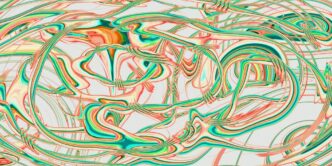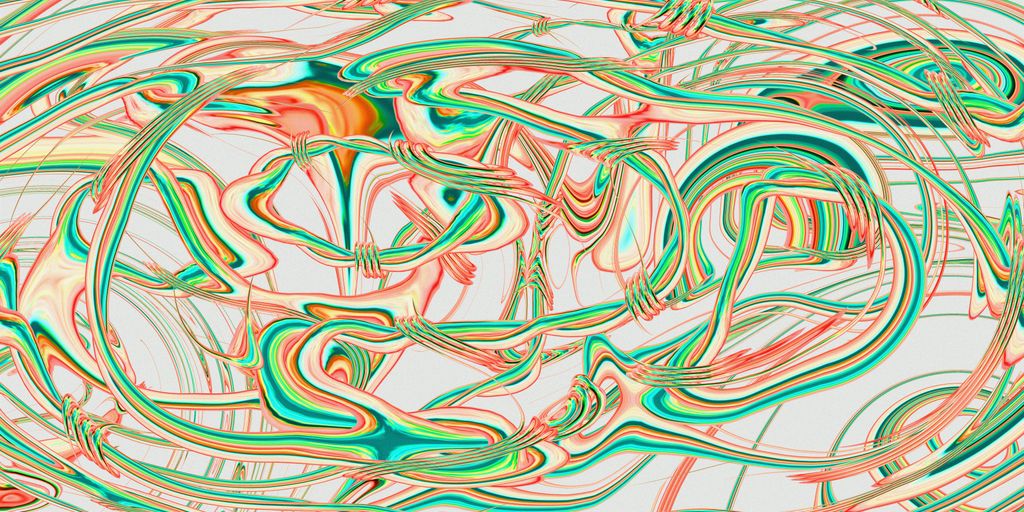So, you’ve probably heard about quantum stuff, right? Like, it sounds super complicated, but it’s actually pretty wild. We’re talking about things like quantum entanglement and teleportation – concepts that make your head spin a bit. They seem like something straight out of a sci-fi movie, but scientists are actually working on this stuff. It’s all about how tiny particles behave, and it’s totally different from what we see in our everyday lives. This article is going to try and break down these mind-bending ideas, what they mean, and why they’re such a big deal in the world of physics.
Key Takeaways
- Quantum entanglement means two particles get linked up, and even if they’re far apart, what happens to one instantly affects the other. It’s like they’re connected by an invisible string.
- Quantum teleportation isn’t about beaming people across the room like in Star Trek. Instead, it’s about moving the information, or ‘state,’ of a particle from one place to another, using entanglement as the bridge.
- These quantum ideas are not just for scientists in labs. They’re actually being looked at for real-world uses, especially for making super secure communication methods and building super powerful quantum computers.
- Thinking about quantum physics makes you question a lot of things about how the world works. It brings up big questions about reality, if we have free will, and how our observations might change things.
- Even though there’s been a lot of progress, scientists are still figuring out how to keep entangled particles connected over long distances and make these experiments even better. There’s still a lot to learn and discover in this field.
Understanding Quantum Entanglement
The Foundation of Entanglement
Quantum entanglement is wild. It’s when two or more particles get linked in a way that they share the same fate, no matter how far apart they are. Measuring the properties of one particle instantly tells you something about the other, even if they’re light-years away. It’s like they’re communicating faster than light, which Einstein famously called "spooky action at a distance." The history of quantum entanglement goes back to the early 20th century.
Cosmic Connection Beyond Classical Physics
Entanglement throws a wrench in how we usually think about the world. In classical physics, objects have definite properties, whether we’re looking at them or not. But in the quantum world, things are fuzzy until measured. Entanglement takes this fuzziness to a whole new level. It suggests that particles aren’t really separate entities but part of a connected whole. It’s a cosmic connection that goes beyond our everyday experience. Consider two entangled particles, A and B. Until measured, the state of particle A is unknown. Measuring it instantly determines both its state and the state of particle B, no matter how far away they are.
Spooky Action at a Distance
Einstein didn’t like entanglement. He thought it implied that information could travel faster than light, which would violate his theory of relativity. He called it "spooky action at a distance" because it seemed to defy common sense. But experiments have repeatedly confirmed that entanglement is real. Alain Aspect’s experiment in the 1980s was a big one. He showed that the correlations between entangled photons were stronger than could be explained by classical physics. This experimental validation was a major blow to local realism, the idea that objects have definite properties independent of measurement and that influences can’t travel faster than light.
The Mechanics of Quantum Teleportation
Transferring Quantum States
Okay, so quantum teleportation isn’t like beaming someone from Earth to Mars in Star Trek. No physical matter is actually moved. Instead, it’s the information about a quantum state that gets transferred. Think of it like sending the recipe for a cake, not the cake itself. The original cake (the initial quantum state) is destroyed at the sender’s location, and an exact replica is created at the receiver’s location, assuming they have the right ingredients (entangled particles) and instructions.
Entanglement as the Teleportation Backbone
Entanglement is absolutely key to making quantum teleportation work. It’s the channel through which the quantum information travels. You need a pair of entangled particles, one held by the sender (Alice) and one by the receiver (Bob). Alice performs a special measurement on her entangled particle and the particle she wants to teleport. This measurement destroys the original quantum state but creates classical information that she sends to Bob. Bob then uses this classical information to manipulate his entangled particle, recreating the original quantum state. It’s a bit like using quantum information to send a fax, but way cooler.
Beyond Science Fiction: Real-World Experiments
Quantum teleportation isn’t just a theoretical concept anymore. Scientists have successfully teleported quantum states over increasing distances. Early experiments teleported photons (particles of light) across short distances in labs. Now, they’re pushing the boundaries, teleporting qubits (quantum bits) over fiber optic cables and even through free space. There are still challenges, like maintaining entanglement over long distances and dealing with noise, but the progress is real. It’s not quite teleporting people yet, but these experiments are paving the way for secure communication and quantum networks. Here’s a simplified view of the progress:
| Year | Distance | Medium |
|---|---|---|
| 1997 | Short (lab) | Photons |
| 2004 | 600 meters | Fiber optic |
| 2020 | 143 km | Free space |
Applications of Quantum Entanglement and Teleportation
Revolutionizing Secure Communication
Quantum entanglement is a game-changer for secure communication. Imagine a system where any attempt to eavesdrop instantly scrambles the message. That’s the promise of quantum cryptography. It uses the properties of entangled particles to create encryption keys that are virtually unhackable. This is because any attempt to measure or intercept the entangled particles disrupts their connection, alerting the sender and receiver to the intrusion. This is a huge deal for governments, financial institutions, and anyone else who needs to protect sensitive information. Quantum key distribution QKD systems are already being developed and tested, paving the way for a future where our communications are truly private.
Advancing Quantum Computing
Quantum computers promise to solve problems that are impossible for even the most powerful classical computers. Entanglement is a key ingredient in making this happen. Qubits, the building blocks of quantum computers, can exist in a superposition of states, meaning they can be both 0 and 1 at the same time. Entanglement allows multiple qubits to be linked together, creating complex correlations that enable quantum computers to perform calculations in a fundamentally different way than classical computers. This could lead to breakthroughs in medicine, materials science, and artificial intelligence. The potential is enormous, and researchers are working hard to build larger and more stable quantum computers that can harness the power of entanglement.
Quantum Cryptography and Key Distribution
Quantum cryptography offers a way to distribute encryption keys with unparalleled security. Here’s how it works:
- Two parties use entangled photons to create a shared secret key.
- Any attempt to intercept the photons will disturb their entanglement, alerting the parties to the eavesdropping attempt.
- The key can then be used to encrypt and decrypt messages using classical encryption algorithms.
This method, known as quantum key distribution, is immune to many of the attacks that can compromise classical cryptography. While still in its early stages, quantum cryptography is poised to become a critical tool for protecting sensitive data in the future. It’s not just about keeping secrets; it’s about ensuring trust in a world where information is increasingly vulnerable. Quantum encryption secure communication is the future.
Philosophical Implications of Quantum Phenomena
Quantum mechanics messes with your head, right from the start. It’s wild how much it challenges what we think is real. And honestly, sometimes the philosophical side of it gets lost in all the equations and experiments.
Rethinking the Nature of Reality
Quantum entanglement throws a wrench into our everyday understanding of reality. It suggests that particles can be linked in a way that defies distance, which makes you wonder if our concept of ‘separate’ things is even accurate. It’s like, are things truly independent, or are they all connected in some weird, fundamental way? This makes you question everything you thought you knew about quantum entanglement and how the world works.
The Observer’s Role in Quantum Mechanics
One of the strangest things about quantum mechanics is the idea that the act of observing something can change it. It’s like, the universe can’t make up its mind until we look at it? That’s a simplified way to put it, but it gets at the heart of the issue. Does our consciousness play a role in shaping reality? It’s a question that’s been debated for decades, and there’s no easy answer. Some people think that consciousness is fundamental, while others think it’s just a byproduct of complex systems. Either way, it’s a mind-blowing idea.
Debates on Determinism and Free Will
Quantum mechanics introduces randomness into the universe. Instead of everything being predetermined, there’s a certain level of unpredictability at the quantum level. This has huge implications for the debate about determinism and free will. If the universe isn’t a clockwork mechanism, does that mean we actually have free will? Or is it just an illusion? It’s a tough question, and quantum mechanics doesn’t give us a clear answer. It just adds another layer of complexity to an already complicated issue. It’s like, maybe our choices aren’t as free as we think, but maybe they’re not completely determined either. It’s a weird middle ground that’s hard to wrap your head around.
Challenges and Future Directions in Quantum Research
Maintaining Entanglement Over Distance
One of the biggest roadblocks in quantum research is keeping entanglement alive over long distances. It’s not as simple as just stretching a rubber band; the further apart entangled particles get, the more susceptible they are to outside interference. This interference, called decoherence, can break the quantum link and ruin the entanglement. Scientists are working on ways to combat decoherence, like using quantum repeaters to boost the signal and protect the fragile entangled states. Think of it like trying to whisper a secret across a crowded room – you need to amplify your voice (the signal) and block out the noise (decoherence) to make sure the message gets through.
Refining Experimental Techniques
Experimenting with quantum phenomena is tricky business. It’s not like your average high school chemistry lab. The equipment needs to be incredibly precise, and the conditions have to be just right. Even the smallest vibration or stray electromagnetic field can throw off an experiment. So, a lot of research is focused on improving the tools and methods we use to create, manipulate, and measure entangled particles. This includes:
- Developing better lasers for creating entangled photons.
- Building more sensitive detectors to measure quantum states.
- Creating more stable and isolated environments to minimize decoherence.
It’s a constant process of trial and error, tweaking and refining, to get the most accurate and reliable results.
Exploring Cosmological Consequences
Quantum entanglement isn’t just something that happens in a lab; some scientists think it might play a role in the universe at large. There’s a growing interest in exploring the cosmological consequences of entanglement, like whether it could have influenced the early universe’s structure or if it could be used to probe the nature of dark matter and dark energy. These are big, mind-bending questions, and we’re only just starting to scratch the surface. It’s like trying to understand the ocean by looking at a single drop of water – we need to find ways to scale up our understanding of entanglement to the cosmic level.
The Interplay of Quantum Entanglement and Teleportation

How Entanglement Enables Teleportation
Okay, so entanglement and teleportation are like peanut butter and jelly – they just go together. You can’t really have one without the other, at least not in the quantum world. Entanglement is the key ingredient that makes quantum teleportation even possible. Think of it this way: entanglement creates a special connection between two particles, no matter how far apart they are. This connection is what allows information to be transferred, not the actual particles themselves. It’s like having two phones that are linked; you don’t send the phone, you send the message.
The Information Transfer Mechanism
So, how does the information actually get from point A to point B? It’s not as simple as beaming someone up, Scotty! Here’s the basic idea:
- You have two entangled particles, one with Alice and one with Bob. Alice wants to teleport the state of a third particle to Bob.
- Alice performs a measurement on her particle and the particle she wants to teleport. This measurement entangles all three particles.
- Alice then communicates the result of her measurement to Bob using classical communication channels (like a phone call or email).
- Based on Alice’s message, Bob performs a specific operation on his particle. This operation transforms his particle into an exact replica of the original particle that Alice wanted to teleport. It’s like using a secure internet to send instructions.
It’s important to note that the original particle at Alice’s end is destroyed in the process. The information is transferred, but the original is gone. It’s more like faxing than teleporting in the sci-fi sense.
Distinguishing State Transfer from Matter Transfer
This is where things get really interesting. Quantum teleportation doesn’t actually move matter. It only transfers the quantum state of a particle. Think of it like this:
- State Transfer: Copying the information that describes a particle (its spin, energy, etc.) from one location to another.
- Matter Transfer: Physically moving the particle itself.
Quantum teleportation is all about state transfer. The original particle’s state is destroyed at the sender’s location, and an identical state is created at the receiver’s location. No actual matter is moved. It’s like sending a recipe instead of the cake. You end up with a cake at the other end, but you didn’t physically transport the original cake. This distinction is important because it means that quantum teleportation isn’t limited by the speed of light. The information transfer is limited by how fast you can send the classical message, but the entanglement itself is instantaneous. This has huge implications for things like quantum cryptography and quantum computing.
Wrapping Things Up
So, we’ve taken a look at quantum entanglement and teleportation. It’s pretty wild stuff, right? We’re not talking about beaming people around like in movies, but the idea of instantly sharing information across distances is still mind-blowing. This whole area of physics is still pretty new, and scientists are working hard to figure out how to use these ideas for things like super-secure communication or even new kinds of computers. It’s a journey, for sure, and who knows what amazing things we’ll discover next. The future of technology might just depend on understanding these strange connections.
Frequently Asked Questions
What exactly is quantum entanglement?
Quantum entanglement is like two coins that are magically linked. If one coin lands on heads, you instantly know the other coin landed on tails, no matter how far apart they are. In the quantum world, particles like electrons or photons can get connected in this special way. If you measure something about one particle, you immediately know something about the other, even if they’re super far apart. It’s a really weird but true part of how the universe works at a tiny level.
How does quantum teleportation work?
Quantum teleportation isn’t like what you see in movies where people disappear and reappear somewhere else. Instead, it’s about sending information, specifically the ‘state’ of a tiny particle, from one place to another without physically moving the particle itself. Think of it like sending a perfect copy of a particle’s properties to a different location, using entangled particles as a special bridge. The original particle’s state gets destroyed in the process, and a new one is created at the destination with the exact same properties.
Can quantum teleportation be used to move people or objects?
No, not at all! Quantum teleportation only moves information, not matter. You can’t use it to teleport a person or even a single atom from one place to another. It’s about transferring the ‘blueprint’ or ‘instructions’ for a particle’s state, not the physical particle itself. The original particle is actually lost when its state is teleported.
What’s the difference between quantum entanglement and quantum teleportation?
The main difference is what’s being moved. Entanglement is the special connection between particles that allows them to share information instantly. Teleportation is a process that *uses* entanglement to transfer the state of a particle from one place to another. So, entanglement is the tool, and teleportation is the action performed with that tool.
Why are quantum entanglement and teleportation important?
These quantum ideas are super important for future technologies. For example, they could lead to incredibly secure ways to send secret messages, called quantum cryptography, because any attempt to listen in would break the entanglement and be noticed. They’re also key to building powerful quantum computers, which could solve problems that even the fastest normal computers can’t handle.
Has quantum teleportation been proven to work?
Scientists have already done experiments where they successfully teleported the quantum states of particles like photons (light particles) over long distances. While it’s not yet ready for everyday use, these experiments prove that quantum teleportation is real and possible. Researchers are constantly working to make these processes more stable and able to work over even greater distances.














